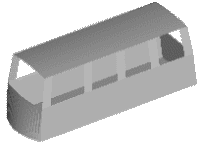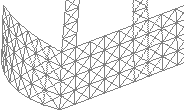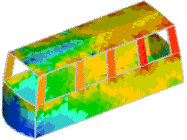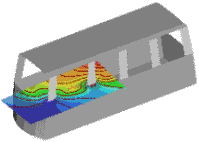|
To solve a task, the user must first prepare the input data. By creating
definitions of simple objects and definitions of induction sources the
user builds the desired structure.
The analyzed objects can be of practically arbitrary shape. For their approximation
polygons, spirals, disks, rings and their sectors, closed and unclosed
surfaces of revolution and cylindrical surfaces, formed by curves
of the second order and two-dimentional splines, and also the surfaces formed by
three-dimensional splines are used. |
 |
|
The software's input data processor builds an analyzing
model, operating as an algorithmic language compiler. In this process,
it checks possible disparities and generates appropriate warnings and
error messages. The 3D model is displayed in a special window, the user
can shift, rotate it and if needed, correct the input data. Then
EDEM builds a mesh for numerical solution. As on all the stages, here
user needs to input minimal information. About default EDEM itself
chooses its type and cell size. Experienced user may add any
additional parameters to optimize the mesh. |
 |
|
After the mesh building, EDEM3D starts a basic
stage - integral equations solution. As a result, the surface current
density induced on analyzing structure is defined. Results can be
displayed in the most convenient kind for a considered case. It can be
the color diagram, the two-dimensional diagram or a vector map. |
 |
 |
When the current density is known, any field
component characteristics and other values are calculated by numerical
integration. One-dimensional distributions are displayed as diagrams;
two-dimensional field distribution can be displayed as a vector map, a
shape, a color picture or a combination of these manners; level lines of
an indicated components of a field can be
constructed. |
 |
|
All the input data and results may be stored for further use: simple
jobs are stored for use in solv-ing more complicated tasks, the surface
current that was defined once may be used for additional field
parameters calculating. The results may be used as samples, displayed in
any form, compared one to another, plotted at the same diagram, etc. |
|



